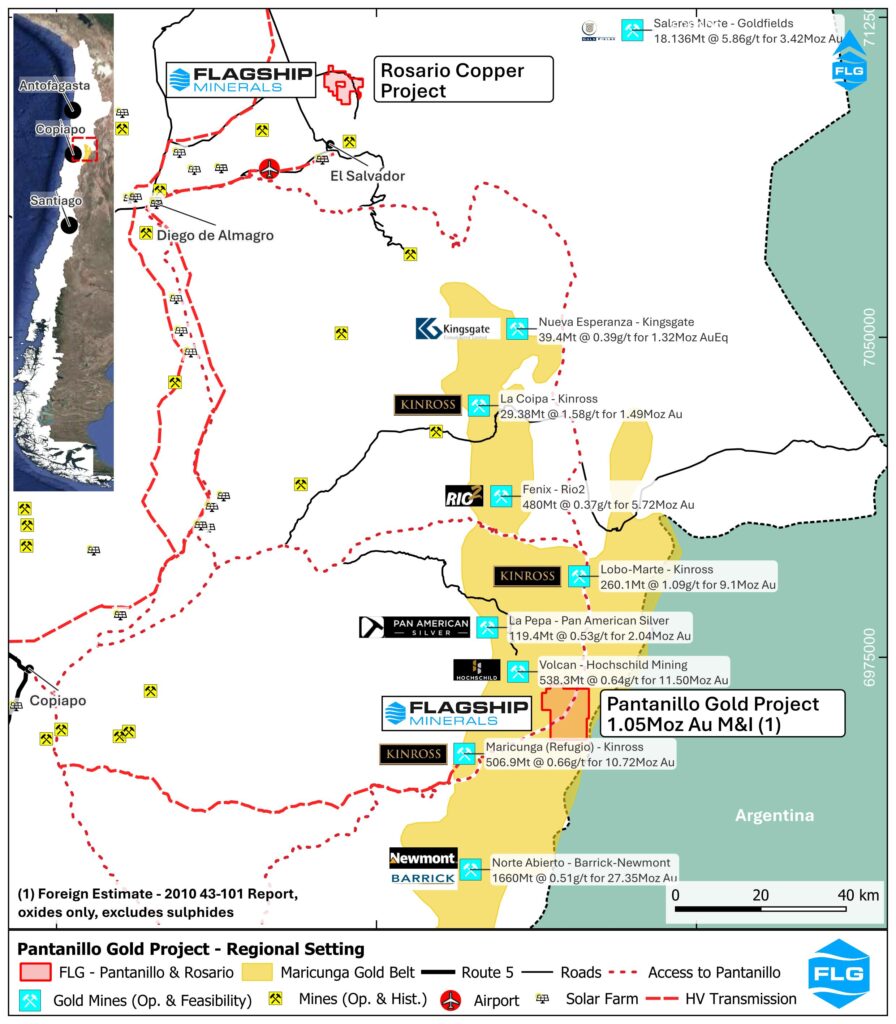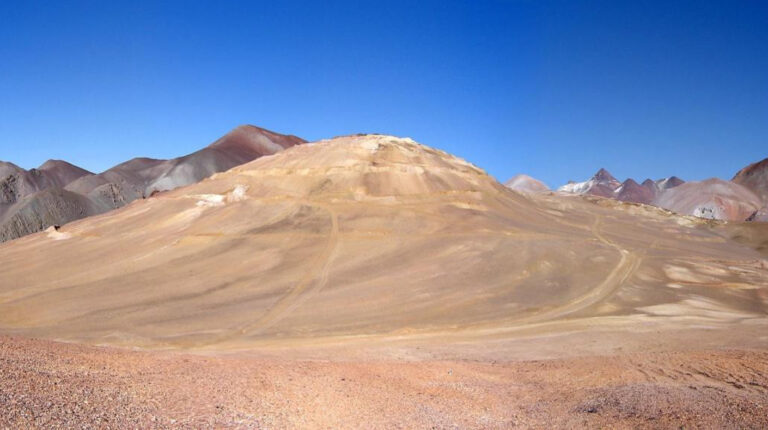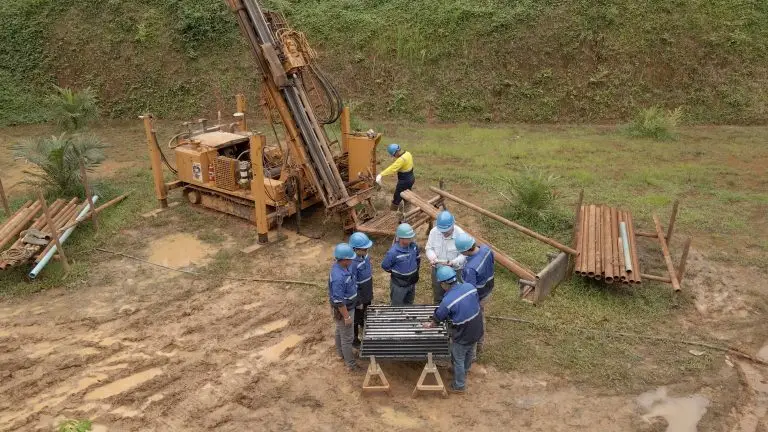The Pantanillo Gold Project is an advanced oxide gold project located in the prolific Maricunga Gold Belt in northern Chile. The project hosts 47.4Mt @ 0.69g/t Au for 1.05Moz Au, supported by an NI 43-101 and 20,531m of DDH and RC drilling.
The Pantanillo Gold Project (Pantanillo) is an advanced gold exploration project located in the prolific Maricunga Gold Belt (MGB) in Northern Chile, in the Andes near the Chilean-Argentine border. Pantanillo is located approximately 125km due east of the city of Copiapo with a population of 175,000.

Pantanillo Gold Project and its regional setting
The MGB is characterized by epithermal gold +/- silver and porphyry gold +/- copper deposits that are Oligocene – Miocene in age and often associated with extinct strata-volcanoes.
The MGB hosts over 65Moz of gold resources in several world-class multi-million-ounce gold deposits such as the Salares Norte (Goldfields), La Coipa (Kinross), Fenix (Rio2), Marte-Lobo (Kinross), La Pepa (Pan American Silver), and Abierto Norte (Barrick/Newmont).
Pantanillo itself hosts 47.4Mt @ 0.69g/t Au for 1.05Moz Au, which is supported by an NI 43-101 and 20,531m of DDH and RC drilling. Approximately 98% of the this is amenable to heap leach processing. Under ASX rules this is a qualifying foreign estimate (QFE)*.
The Pantanillo QFE has an effective date of July 9, 2010 and was reported in accordance with the Canadian Institute of Mining, Metallurgy and Petroleum (CIM) standards and the National Instrument 43-101 (NI 43-101) by Orosur Mining Inc. (TSXV:OMI) on October 15, 2010.
Modern exploration commenced in 1983 and has been conducted by Anglo American, Empresa Minera Mantos Blancos (EMMB), a Chilean subsidiary of Anglo American, Kinross Gold Corp. (Kinross), Fortune Valley Resources (FVR) and Orosur Mining Inc (Orosur). Work completed includes geological mapping, soil and rock geochemical surveys, ground magnetics, trenching, reverse circulation (RC) drilling, diamond core drilling (DD), metallurgical testwork and supporting studies.
The Pantanillo gold deposit is over 850m long and between 200m-600m wide and remains open along strike and down-dip. The mineralised zone strikes NE-SW and dips at 30-45 deg to the southwest. Mineralisation is hosted in weathered and altered andesitic porphyry with sheeted and stockwork quartz veins.

Pantanillo Gold Project and its immediate setting
Oxide zones contain kaolinite, alunite, with limonite/goethite and hematite after pyrite. Fresh rock has a chlorite +/- magnetite +/- pyrite +/- quartz alteration assemblage, with denser vein swarms, local breccia zones and late quartz-alunite veins hosting mineralisation commonly with higher gold grades.
*Qualifying foreign estimates (QFE) are not reported in accordance with the JORC Code (2012). The Competent Person has not done sufficient work to classify the qualifying foreign estimates in accordance with the JORC Code (2012) and it is uncertain that following evaluation and/or further exploration work that the foreign estimates will be able to be reported as Mineral Resources or Ore Reserves in accordance with the JORC Code.

Pantanillo is an oxide gold project located in the Maricunga Gold Belt (MGB), which hosts ~100Moz Au. Gold majors Barrick, Newmont, Kinross and Goldfields present. Pantanillo has a 47.4Mt at 0.69g/t for 1.05Moz Au MRE (NI 43-101) supported by ~20,500m of drilling, and is open up and down dip, and along strike.

At Rosario Flagship is targeting oxide copper. Rosario has 15km of strike across three zones. The eastern zone is interpreted to be 20-200m wide with assays up to 8.9% Cu. 100 non-selective rock chips and channel samples average 2.16% Cu and 12g/t Ag (0.1% cutoff) and 3.15% Cu and 18g/t Ag (0.75% cutoff).

RK is a hard rock lithium project located in Southern Thailand. The project has an MRE, ~165kt LCE, and positive metallurgy. The MRE relates to 1 of 3 prospects, the other two prospects are supported by strong drilling and geochem results. As Thailand is Southeast Asia’s largest EV producer, RK has strategic value.